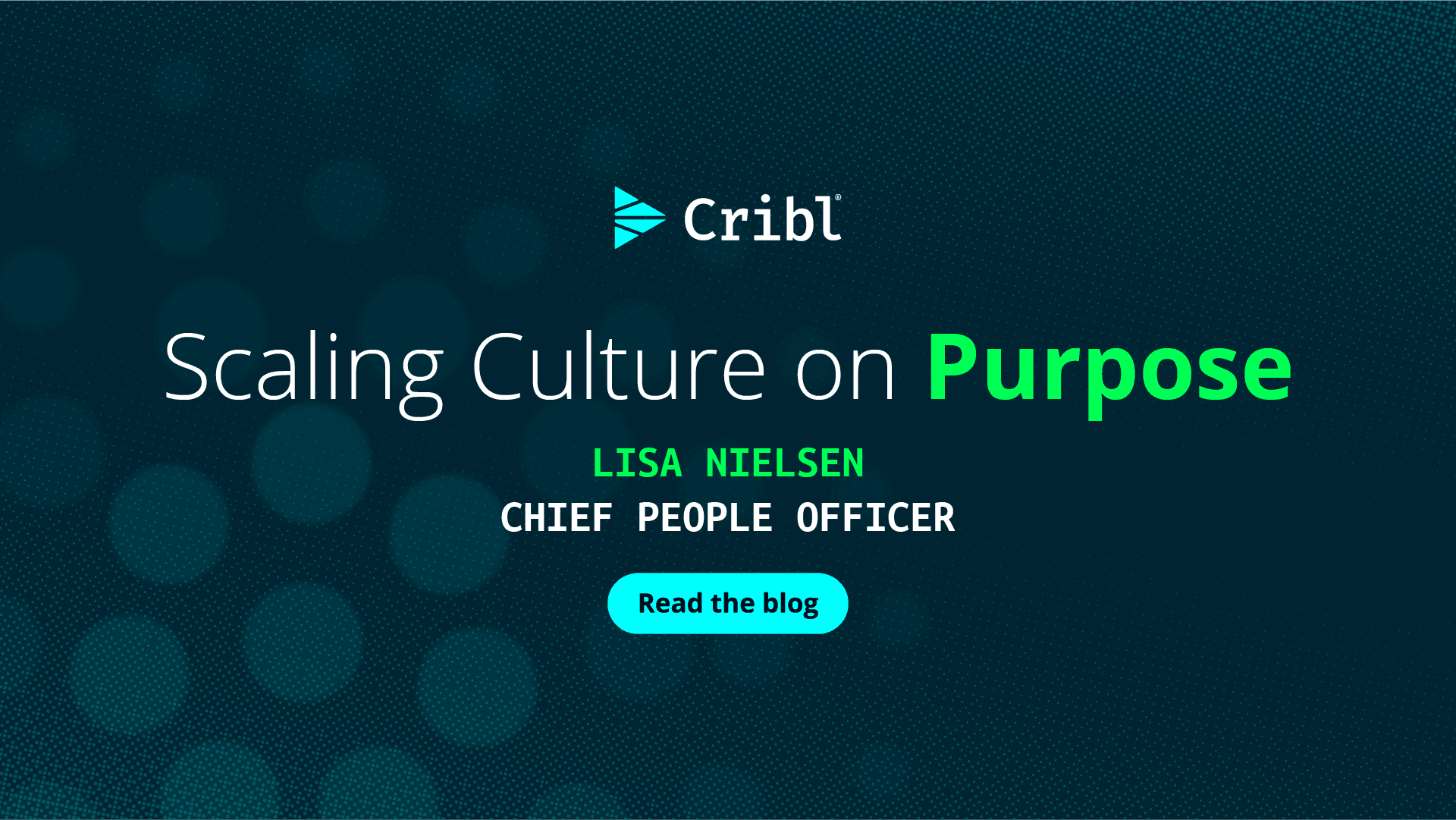Software exists to make your job easier, not to suck the joy out of your work. It should be there when and if you need it, but be completely out of the way when you don’t — you’re at work to get a job done, not to use any particular product. If you’re forced into using the same underperforming, over-customized, difficult to implement, or just generally terrible software each and every day, it can really put a damper on the quality of your work and quality of life. Multiply this feeling times the number of employees at your organization, and it becomes the perfect recipe for disaster.
Here at Cribl, we were buyers of software before we became vendors. So we know precisely what shit software is and how painful the interactions with vendors can be. We’ve seen it all — ugly interfaces, poor documentation, and big corporations stuck between you and the developers of the solutions that were supposed to be built and iterated with you in mind.
Over time, the landscape has shifted a bit. We’re seeing more open source solutions with more interaction between developers and end-users. But no matter how hard companies try, it’s hard not to fall into the same pattern of beginning their journey with the customer in mind, and then veering off the path and getting wrapped up in talks about meeting quarterly sales goals and pleasing shareholders. What began as a passion project to solve a specific problem becomes nothing more than a vehicle for meeting some sort of quota without regard for how that affects customers.
When Corporations Speak for The Customer
It would be impossible to guess the number of times we’ve heard of conversations within large software enterprises centered around what some analyst thinks would help fit them neatly into some arbitrary category or help meet some vanity metric that is in no way correlated to what customers want.
Talks tend to center around the market, shareholders, or the management team, and meetings can go on for hours without any mention of an end-user and their experience. Ideas for new features get pulled out of thin air and come from everyone except those who would be using those features.
If you couldn’t tell, we think that’s a terrible business model, and that’s why we’re doing things differently.
We’re Here to Solve Our Customer’s Problems
The stone-cold truth is that when we first meet our customers, they’re in pain— they’re struggling to get data onboard, control costs, and integrate tools. This is pretty much all they can think about when we speak to them. When you’re drowning, you don’t tend to talk about the weather.
If it’s possible to ask your customers exactly what they’re struggling with and offer them a direct solution to their problem, shouldn’t we all be doing that?
We’re In It for The Long Haul
Our customer-first mentality has gotten us this far, and we think it will take us even further. That’s why we made sure that every person in the company, from top to bottom, understands the value we place on putting the customer first. We want this value to inform the decisions being made at every level in the organization, especially the kinds of decisions that our co-founders may never be aware of.
Putting the customer first becomes even more important as we scale. Every meeting, from product design to sales to People Operations, has to begin with the customer in mind. People on the outside looking in should be able to get a sense of the kind of relationship we want to have with our customers. We’re also doing this with our own team, who we see as our internal customers, making sure we treat them well and address their concerns.
Listen To Your Customers or Someone Else Will
When your organization’s goals are in direct conflict with the customers’ interests, it’s going to be hard to maintain the progress you have made. For us, there is no conflict. If the customer doesn’t need more tools, we don’t sell them more tools. Everyone we work with is an individual with needs, not a checkbook, which is good since no one uses checkbooks anymore.
Software is fundamentally a people business; it’s so much more than just the technology that gets created. It reflects the entire customer experience from how salespeople treat you, how the onboarding and eventual renewal processes go, and everything in between. Do the salespeople treat you well? Do they tell you you’re dumb or treat you as a smart, intelligent person who can actually reason about things and decide what solution might work for you? How are the sales engineers? Are they friendly but also highly technical, and were they able to help you figure out the solution and how it fits into your environment? How’s the marketing? Was the messaging funny? Engaging? Did you like the ads? When you call for support, do you get somebody who’s knowledgeable or do you get someone who may not even work for that company? Every one of these interactions is with an actual person at the company, and the sum total of these interactions fundamentally defines your experience with the software.
Here’s the thing: when your customers would be perfectly happy without any more tools to deal with, but they’re willing to go through a proof of value event, listen to salespeople, work with procurement, and go through the entire process, that speaks volumes to how badly they want a solution. Lucky for them and us, we’re here to listen and give them what they want. If a customers first culture appeals to you, we’d love to chat with you.
More about Cribl
Cribl, the Data Engine for IT and Security, empowers organizations to transform their data strategy. Customers use Cribl’s suite of products to collect, process, route, and analyze all IT and security data, delivering the flexibility, choice, and control required to adapt to their ever-changing needs.
We offer free training, certifications, and a generous free usage plan across our products. Our community Slack features Cribl engineers, partners, and customers who can answer your questions as you get started. We also offer a hands-on Sandbox for those interested in how companies globally leverage our products for their data challenges.







